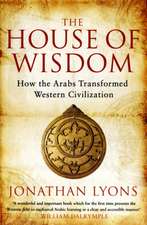Medieval Cathedrals: Greenwood Guides to Historic Events of the Medieval World
Autor William W. Clarken Limba Engleză Hardback – 29 dec 2005 – vârsta până la 17 ani
Preț: 320.06 lei
Preț vechi: 554.76 lei
-42% Nou
Puncte Express: 480
Preț estimativ în valută:
61.26€ • 66.57$ • 51.49£
61.26€ • 66.57$ • 51.49£
Carte tipărită la comandă
Livrare economică 21 aprilie-05 mai
Preluare comenzi: 021 569.72.76
Specificații
ISBN-13: 9780313326936
ISBN-10: 0313326932
Pagini: 328
Dimensiuni: 156 x 235 x 30 mm
Greutate: 0.65 kg
Editura: Bloomsbury Publishing
Colecția Greenwood
Seria Greenwood Guides to Historic Events of the Medieval World
Locul publicării:New York, United States
ISBN-10: 0313326932
Pagini: 328
Dimensiuni: 156 x 235 x 30 mm
Greutate: 0.65 kg
Editura: Bloomsbury Publishing
Colecția Greenwood
Seria Greenwood Guides to Historic Events of the Medieval World
Locul publicării:New York, United States
Notă biografică
William W. Clark is Professor of Art History at Queens College. He is the author of Medieval Architecture, Medieval Learning: Builders and Masters in the Age of Romanesque and Gothic, among other titles.
Cuprins
List of IllustrationsEditor's PrefaceIntroductionOverview: The History of Cathedrals as Societal HistoryPatrons, Builders and ArtistsPlanning and Construction, Early Medieval to RomanesquePlanning and Construction in the Gothic EraNotre-Dame at Reims, the Cathedral of FranceEpilogueIllustrationsPrimary SourcesTimelineGlossarySelected Bibliography
Recenzii
Conceived for high schools as a ready reference and a stimulation for critical thinking, these books all follow a similar format: an overview, a range of examples (28 photos in this case), selected contemporary documents translated into English, a glossary, and an annotated bibliography..Although not all will agree with his decision to focus, e.g., on the power struggles between bishops and secular lords rather than on cities and their inhabitants, his deft handling of problems facing patron and builder, and the development in the Gothic era of new technologies with which to solve them, will provide students with a solid foundation..General readers; lower-division undergraduates; two-year technical program students.
Clark examines the religious architecture found in the cathedral (chair of the bishop) or great church, studied in terms of its architecture, sculpture, and stained glass. Coverage includes an overview of the concept of the bishop and his role within the church hierarchy; the growth of the church in the early Christian era and its affiliation with the bishop; the social history of cathedrals; patrons, builders and artists; and planning and construction. The text also includes a gazetteer of 25 important examples; a chronology; a selection of 53 primary documents, including historical documents about important events or social situations pertaining to cathedrals or ecclesiastical officials, and descriptive documents about cathedrals; a glossary of terms; and annotated bibliography. Academic but accessible to the general reader.
[M]edieval Cathedrals..[p]rovides plenty of primary source documentation throughout, adds black and white illustration examples of Gothic structures, and provides both architectural and spiritual insights.
Clark examines the religious architecture found in the cathedral (chair of the bishop) or great church, studied in terms of its architecture, sculpture, and stained glass. Coverage includes an overview of the concept of the bishop and his role within the church hierarchy; the growth of the church in the early Christian era and its affiliation with the bishop; the social history of cathedrals; patrons, builders and artists; and planning and construction. The text also includes a gazetteer of 25 important examples; a chronology; a selection of 53 primary documents, including historical documents about important events or social situations pertaining to cathedrals or ecclesiastical officials, and descriptive documents about cathedrals; a glossary of terms; and annotated bibliography. Academic but accessible to the general reader.
[M]edieval Cathedrals..[p]rovides plenty of primary source documentation throughout, adds black and white illustration examples of Gothic structures, and provides both architectural and spiritual insights.






















